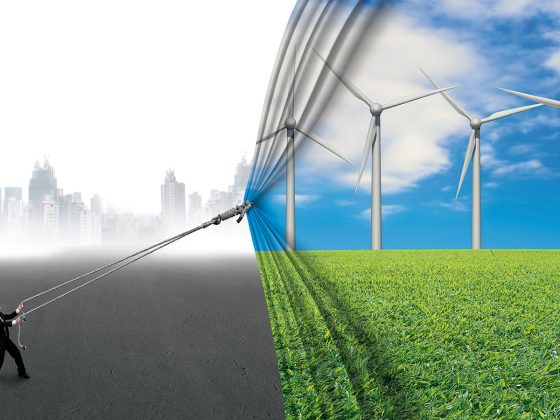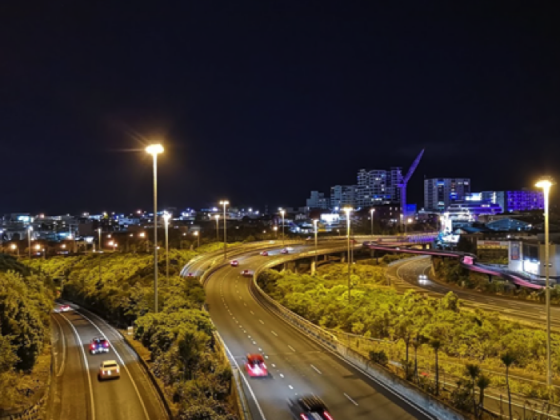
This is a summary version of a policy Analysis by Jack Young, Engineer specialising in industrial energy management and sustainability. For the full version with references and scientific discussion go here.
The Green Party has recently released their Clean Energy Plan, outlining policy ideas for the coming election cycle. They show a strong focus on solar photovoltaic (PV) panels, including a flagship policy to install solar PV panels with a battery to all 63,000 state homes in NZ.
With an estimated price tag of $1.3 Billion, this flagship policy package definitely deserves a closer look. The other policy suggestions are summarised below.
But aren’t solar PV panels a good thing?
First – a quick explainer. Solar PV panels generate electricity directly from the sun. They can generate some power in diffuse (cloudy) conditions or when the sun is at a low angle (morning and evening), but can only generate their full output when the sun is shining brightly, high in the sky. Most houses in NZ don’t use much power in the middle of a sunny day. Our electricity consumption peaks in the early mornings and mid/late evenings, due to cooking, space heating (especially in winter), lighting, other appliances and water heating. A battery could store the energy generated by solar PV during the middle of the day, and use it during the mornings and evenings.
Sounds pretty good so far!
But the benefit (or lack of) from installing solar PV comes from understanding the electricity that is offset or replaced. In NZ, we generate about 80-85% of our electricity each year from renewable sources. Depending on weather patterns, this is usually made up of; hydro (60-65%), geothermal (18%), natural gas (11-14%), wind (5-6%) and coal (1-3%). This means that overall, our electricity has a very low carbon emissions intensity. In 2016 (the latest year for which data is available), our average carbon emissions intensity was 98 grams of CO2 emissions per kWh of electricity. This is 8 times lower than Australia, which averages roughly 800 grams of CO2 emissions per kWh of electricity.
And in NZ, it’s predicted to get even better. Modelling by the Independent Climate Change Commission (ICCC) suggests we will be at around 93% renewable electricity by 2035, even without further government intervention. It’s also worth noting that solar panels generate most of their electricity over the summer months, which is (inconveniently) when NZ has a surplus of renewable energy due to our hydro resources.
But there’s still a benefit right?
There is a small benefit with the ongoing emissions, as solar has zero ongoing emissions while NZ grid electricity has some (small) amount from geothermal power stations and from burning the small amount of natural gas and coal we need for electricity. But the complicating factor is that solar PV panels are quite emissions intensive to manufacture. They require ‘carbothermic’ reduction of the mined silicon dioxide ore by reacting it with coal at about 2,000 °C. The coal is burnt to draw the oxygen out of the silicon, releasing carbon dioxide into the atmosphere.
Other materials used to make the panels are aluminium and glass – which also have a significant carbon footprint from the manufacturing process. The net effect is that although solar PV panels don’t release any carbon dioxide from generating electricity over their useful lifetime, they require a significant upfront release of carbon dioxide into the atmosphere to create the panels themselves. It is estimated that each 1 kW of panel capacity has embodied emissions of about 2,500 kg of CO2, although some estimates vary above and below this value.
This isn’t so bad if the panel is used to offset electricity from coal or natural gas, as it would in Australia, where a solar PV panel would ‘pay off’ its carbon debt within 2-3 years. But in NZ, with our low-carbon electricity, it could take about 20 years to pay off the carbon debt from the manufacture of the panels. That’s close to the panel lifetime of about 25 years. And adding a battery roughly doubles the up-front carbon emissions required. When considering that NZ electricity is likely to get even cleaner over the next decade or so due to (already consented) wind and geothermal generation replacing natural gas baseload power stations, the situation doesn’t look good for solar PV here. It is possible that solar PV panels, installed in NZ, will never offset enough carbon dioxide over their lifetime to make up for the carbon dioxide emitted during their manufacture. They could be a net emitter.
In reality, it is a little more complex and murky than this. Solar PV systems, using a battery to deliver power in the evenings, should reduce the grid peak demand in the evenings. It could be argued that to properly account for the effect of generating solar power during the day and delivering it in the evenings, the evening ‘marginal generator’ should be considered. This is the specific power station which makes up the last little bit of power needed each evening. For example, this is the power station which has to reduce it’s output if you turn off your lights (or use solar PV). In NZ, this is broadly likely to be a natural gas turbine power station, also known as a ‘gas peaker plant’.
Comparing solar PV and a battery against the emissions intensity of a gas peaker plant would make solar PV look much more favourable, even paying off the carbon debt from manufacture of the panels and battery in as little as 5 years. However, this analysis relies on the assumption that power from solar PV will offset power from a gas peaker plant, and there is no way to actually know if this is the case. It is worth noting that most of the ‘peaking’ generation in NZ is currently carried out by hydro power stations, not gas peaker plants. And because solar PV generates less electricity over winter, NZ would be left with a gap over winter months which could be filled with natural gas power stations, removing any net benefit to grid emissions.
This $1.3 Billion would be better spent elsewhere. It could more effectively help families in our state housing system by reducing their power bills and expenses through more effective insulation, low-energy lighting, efficient space heating and efficient water heating like solar hot water or heat pump water heaters. Alternatively, it could help replace old, cold and damp state housing with new, warm and efficient housing.
It could more effectively reduce emissions if it targeted applications outside the electricity sector, for example; to help replace private car trips with public transit, to help replace private cars with battery-electric vehicles, or to help replace natural gas space heating systems with modern alternatives like heat pumps. The focus on solar PV ignores the urgent need to reduce our energy use overall, and could even increase overall grid emissions.
Other policy
The other regulatory and funding improvements suggested in the Clean Energy Plan policy document include:
• Make it 50% cheaper for everyone to install solar PV and batteries – For the same reasons outlined above, this is not recommended. Rapid, mass adoption of solar PV is not a good idea in NZ and could actually increase NZ grid emissions. In other countries, like Australia, this would be a very different story.
• Accelerate 100% renewable electricity target from 2035 to 2030 – while this sounds like an easy thing to support, it is largely a distraction. This would mean very significant investment in making our already clean electricity sector slightly cleaner. With respect to emissions, this would be a very large investment for a small benefit.
• A clean energy industry training plan to train new workers – this is a promising step to address a predicted skills shortage for the energy transition, but unfortunately vague on any details. We would hope for a focus on local community-scale projects, especially with respect to retrofitting old buildings for improved efficiency, however from the tone of the Clean Energy Plan they could mean training people to install solar PV panels.
• A swift ban on new fossil-fuelled industrial heating equipment – this is ambitious and will face strong opposition, but could avoid the purchase of new fossil-fuelled equipment which could operate for 20-30 years or more. When coupled with the below support, this may avoid new gas-fired equipment being installed in the future.
• Tripling of government support to help businesses who can switch from fossil fuels to cleaner options like electricity and biomass – this is a great initiative and will be needed to support the previously mentioned ban. It will make a large difference in reducing the emissions from some businesses in NZ, with already proven technologies like biomass, direct electric heating and heat pumps. However, businesses are also concerned about ongoing energy costs and are reluctant to switch away from low-cost fossil fuels. An up-front subsidy won’t necessarily address this.
• Stop issuing permits for onshore gas extraction – this is a move in the right direction but seems premature by 5-10 years, as natural gas is currently a necessary part of our electricity mix and still widely relied on in NZ industry to heat boilers, ovens and furnaces. Perhaps a better option would be a staged reduction in permits, as part of a 10-15 year planned phase-down of natural gas use. This would allow those businesses and homes in NZ which are currently using gas to plan for alternatives, with time to make an orderly transition.
• Updating planning rules to make new wind farms easier to build – this is promising, as wind generation has very low embodied emissions – much lower than solar PV. However, we have significant wind generation already consented in NZ, and so making the consenting process easier won’t necessarily mean any new wind farms actually get built. What could be needed instead is changes to the regulatory structure of the electricity market, or to the responsibilities of the Electricity Authority, to make power generators actually build these (already consented) wind farms. It would be great to see the Green Party advocating for the public good in these areas.
• Funding five LED light bulbs for every household in NZ – this is a relatively low-cost policy (estimated total cost of $21 Million), but very effective and will have good benefits with reducing electricity peak demand, electricity costs to families, and emissions. It will help all families reduce their electricity bills, but especially low-income families who might not already have efficient lighting installed. This programme should be bigger and more ambitious, which could deliver benefits to all NZ households, low-income families especially, electricity cost savings to NZ as a whole, and emissions reductions from a reduced winter peak load. Win-win-win-win.
• Modernising poles and wires – this recognises that the current electricity distribution companies are not fully equipped to deal with the predicted rapid uptake of electric vehicles, electrification of industry and distributed generation (like solar), which changes the dynamics of their systems. However, nothing is actually suggested here except for supporting discussions with Lines companies, which are already happening in the industry. A complementary alternative instead could be specific support to develop vehicle-to-grid pricing plans in NZ, to allow existing batteries, that are already installed in electric vehicles, to contribute electricity to the grid during evening peak periods.
• Improved coordination of government agencies – this recognises that various government agencies have somewhat overlapping responsibilities. However, this is already a focus of the new ICCC.

The Dig and the Better Futures Forum are running this Transitional Energy Series in order to address what we see as the major questions New Zealand faces surrounding energy if we are to make this transition.
Help us answer some of these questions here:
Comment on the Transitional Energy Series here




